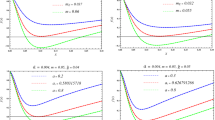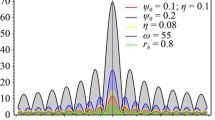Abstract
This work presents a resolution of the causality paradox formulated by T. D. Lee in the theory of the Unruh effect and in the theory of black holes. The basis of the resolution is to take into account the transformation of a pure state into a mixed state in a measurement, which leads to a corresponding modification of the Bogolyubov transformations, so that “black holes remain black.”
Similar content being viewed by others
Literature cited
T. D. Lee, Nucl. Phys. B,264, 437 (1986).
W. Unruh, Phys. Rev. D,14, 870 (1976).
N. Birrel and P. Davis, Quantized Fields in Curved Space-Time [Russian translation], Mir, Moscow (1984), p. 619.
H. Araki and G. Woods, J. Math. Phys.,4, 637 (1963).
A. A. Grib, Usp. Fiz. Nauk,142, 619 (1984).
A. A. Grib and N. Sh. Urusova, in: Abstracts, 10th International Conference on General Relativity of Gravitation, Vol. 2 (1983), p. 1081.
Author information
Authors and Affiliations
Additional information
Translated from Izvestiya Vysshikh Uchebnykh Zavedenii, Fizika, No. 5, pp. 95–97, May, 1989.
The author thanks N. Sh. Urusova for discussion of the work.
Rights and permissions
About this article
Cite this article
Grib, A.A. Are black holes black?. Soviet Physics Journal 32, 401–403 (1989). https://doi.org/10.1007/BF00895326
Received:
Issue Date:
DOI: https://doi.org/10.1007/BF00895326




